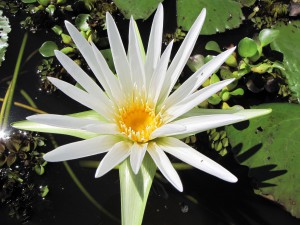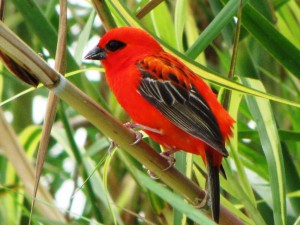Numerous animal and plant species have disappeared from the area or are on the verge of extinction and due to the far-reaching changes of the marshland. The Delacour grebe (Tachybaptus rufolavatus), whose distribution was limited to Lake Alaotra, has been considered extinct since 2009 according to the IUCN. The decreasing populations of other endangered species continues to be worrying. The monitoring program of the Durrell Wildlife Conservation Trust shows that the population of many endemic fish species is declining steadily. No more endemic species have been sighted in fish catches since 2001, suggesting that a majority of these species are already extinct.
The population of the Alaotra Gentle Lemur has dropped from 11,000 individuals in 1990 to about 3,000. The Alaotra Gentle Lemur is therefore one of the most endangered lemurs species, classified by the IUCN as “critically endangered”. Experts believe that this species could be extinct in less than 40 years. As with the extinction/extirpation related to other species in the area, the destruction of freshwater marshes through slash and burn techniques and poaching are largely to blame.
The encroachment of invasive plant and animal species in the region is also likely responsible for the decline or loss of some species. Looking at the fauna, especially the introduced fish species snakehead (Channa maculata) and Tilapia spp. lead to considerable disruption of the ecosystem. In addition, the ongoing spread of the Water Hyacinth (Eichhornia crassipes), which originates from South America, is causing great ecological, social and economic problems. Due to their rapid rate of reproduction, the complex root structure and the formation of dense mats (up to two million plants per hectare) it is one of the most invasive plant species worldwide.



